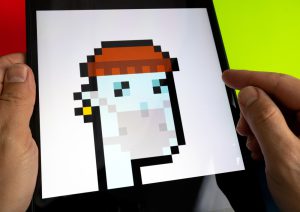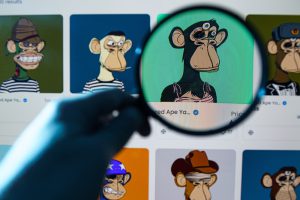Introduction
Non-fungible tokens (NFTs) are ground-breaking inventions that are transforming the way we view and engage with digital content on blockchain networks in the ever-expanding world of digital assets. Even though NFTs have become extremely popular recently, it is important to honor the pioneers and visionaries who laid the groundwork for this game-changing technology. We take you on a journey through the early stages of the development of NFT projects in this blog, honoring the early pioneers who set the groundwork for the non-fungible token space. We can learn a great deal about the development of digital ownership, creativity, and exchange by investigating the beginnings of NFTs and the creative projects that followed. Come along as we reveal the tales of the trailblazing projects and inspirational people who helped to transform the non-fungible token market and cause a revolution in the digital economy.
- The Genesis of NFTs: With the advent of initiatives like Colored Coins and Counterparty in the early stages of blockchain technology, the idea of non-fungible tokens first emerged. More advanced token standards were made possible by the ability to tokenize physical assets on the Bitcoin blockchain in these early experiments. However, the full potential of NFTs was not realized until the launch of Ethereum in 2015. Because of Ethereum’s smart contract capabilities, developers were able to create and implement NFTs with great success, resulting in the emergence of innovative projects in the digital art, gaming, and collectibles sectors.

CryptoKitties: The Cat That Started It All
Launched in late 2017 by the Canadian studio Axiom Zen, CryptoKitties is one of the most iconic and early NFT projects. The concept of collectible digital assets was first introduced by CryptoKitties, which are cute virtual cats that are stored as ERC-721 tokens on the Ethereum blockchain and are individually generated. The crypto community was enthralled with CryptoKitties, which garnered a lot of attention and caused network congestion because of its popularity. The project laid the groundwork for further advancements in the field by showcasing how NFTs can produce digital scarcity and a thriving virtual collectibles market.
Decentraland: Building a Virtual Metaverse
Decentraland, an Ethereum-based virtual reality platform where users can purchase, trade, and develop virtual land and assets using NFTs, is another innovative NFT project. The platform, which was introduced in 2017 by the Decentraland Foundation, lets users engage in virtual economies, interact with others, and create immersive experiences. A bold vision for the future of virtual worlds, Decentraland uses blockchain technology to secure the ownership of digital assets and land. Through the utilization of NFTs, Decentraland facilitates the ownership and control of virtual assets by its users, opening up new avenues for digital ownership and self-expression.
Art Blocks: Pushing the Boundaries of Digital Art
Art Blocks is a digital art platform that is leading the way in showcasing generative art projects as NFTs. Developer Erick Calderon founded Art Blocks in 2021, which offers a curated marketplace for works of art created by algorithms. This enables collectors to acquire one-of-a-kind, authentic digital creations. Art Blocks shows how NFTs can empower artists to produce and market digital art in novel ways, challenging conventional ideas of art ownership and authenticity. Art Blocks is a digital platform that facilitates artistic expression and experimentation by fusing blockchain technology with generative algorithms.
Challenges and Opportunities: There are still issues with scalability, sustainability, and inclusivity even though early NFT projects have revolutionized digital ownership and creativity. Small creators and collectors may find it difficult to access the Ethereum network due to high gas fees, and calls for more environmentally friendly blockchain solutions have been sparked by worries about the network’s potential negative effects. Furthermore, because the NFT industry is still in its infancy, participants face risks from volatile markets and unclear regulations. But even with these difficulties, there are a ton of chances for innovation and expansion because developers, artists, and enthusiasts are still pushing the envelope of what is feasible with NFTs.

Conclusion
In conclusion, the initial NFT initiatives have significantly influenced the development of digital ownership and creativity. These innovative projects, which range from CryptoKitties to Decentraland and Art Blocks, have shown how revolutionary NFTs can be in transforming the ways that we produce, gather, and use digital assets. In order to advance the adoption and widespread acceptance of non-fungible tokens, it is crucial to acknowledge the contributions of these pioneers and build on their legacy as the NFT space continues to develop. We can fully utilize NFTs to transform digital commerce and cultural expression in the future by promoting cooperation, creativity, and inclusivity.

